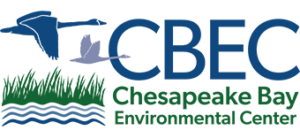By: Julie Slacum, USFWS Annapolis
Birds, bats, bees, butterflies, moths, flies, beetles, and other small animals that pollinate plants, help provide us with fruits, vegetables, nuts, oils, fibers, and raw materials. As pollinating animals visit flowers to drink nectar or feed off of pollen grains, they transfer pollen plant-to-plant which facilitates reproduction of the plants. Pollinators provide pollination services to over 180,000 different plant species and more than 1,200 crops, and contribute 217 billion dollars to the global economy.
Many pollinator populations are in decline due to loss in feeding and nesting habitats. As native vegetation is replaced by roadways, buildings, manicured lawns, crops, and non-native gardens, pollinators lose the food and nesting sites that are necessary for their survival. The improper use of pesticides can also impact pollinators and their habitats. Pesticides include products such as weed killers and insecticides. There are times when pesticides are needed to control pests. For example, some non-native, invasive plant species out-compete native plant species which provide food and habitat for wildlife. However, it is important to use pesticides only when necessary and to target the pest without impacting other species.
Migratory pollinators that travel great distances such as monarchs need suitable habitat patches to provide food for their journey and suitable nesting sites. So every bit of habitat is important, even if the habitat patches are not large. The U.S. Fish and Wildlife Service’s Chesapeake Bay Field Office is working with the Center to create pollinator meadow habitat on-site. There is plenty of milkweed on the property which is the host plant for monarchs. However, plants of various species that flower throughout the spring, summer, and fall seasons, are the most beneficial for a wide variety of pollinators.
An area adjacent to the visitor center had mostly shrubs, woody vegetation, and invasive species. This area was treated and woody vegetation was manually removed to provide a cleared area to seed next spring. The seed mix that will be used contains many different types of flowering plants, including common milkweed, butterfly milkweed, Black-eyed susan, Early and Grey goldenrod, Aromatic aster, and White Oldfield aster. The pollinator meadow will benefit many pollinators while educating students that visit Chesapeake Bay Environmental Center about the decline and importance of pollinators.


